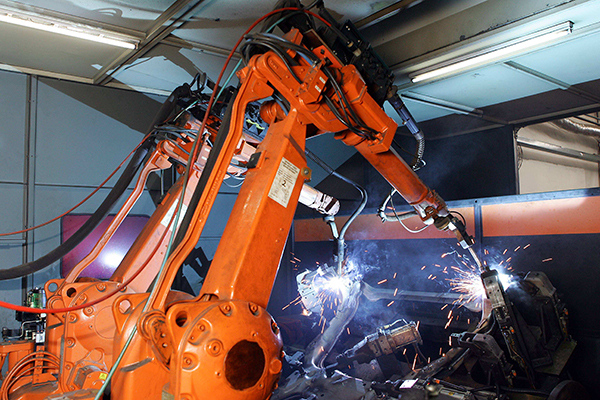
Core technology of industrial intelligence
welding robot

welding robot
Welding robots are industrial robots engaged in welding (including cutting and spraying). According to the International Organization for Standardization (ISO) definition of industrial robots as standard welding robots, industrial robots are multi-purpose, repeatable programmable automatic control manipulators with three or more programmable axes for use in the field of industrial automation. In order to adapt to different applications, the mechanical interface of the robot's last shaft is usually a connecting flange that can be connected to different tools or end actuators. Welding robots are equipped with welding tongs or welding (cutting) guns on the end shaft flange of industrial robots, enabling them to perform welding, cutting, or thermal spraying.
brief introduction
With the development of electronic technology, computer technology, numerical control, and robotics, automatic welding robots have become increasingly mature in technology since they were used in production in the 1960s, with the following main advantages:
1) Stabilize and improve the welding quality, and can reflect the welding quality in numerical form;
2) Improve labor productivity;
3) Improve the labor intensity of workers and work in hazardous environments;
4) Reduce the requirements for workers' operating skills;
5) The preparation cycle for product modification and replacement is shortened, and corresponding equipment investment is reduced.
Therefore, it has been widely used in various industries.
characteristic
Spot welding does not require very high welding robots. Because spot welding only requires spot control, there are no strict requirements for the movement trajectory of the welding tongs between points, which is why robots were originally only used for spot welding. A robot for spot welding should not only have sufficient load capacity, but also have fast speed, smooth movement, and accurate positioning when moving between points, in order to reduce displacement time and improve work efficiency. How much load capacity a spot welding robot needs depends on the type of welding tongs used. For welding tongs separated from transformers, a robot with a load of 30 to 45 kg is sufficient. However, on the one hand, this type of welding tongs is not conducive to the robot extending the welding tongs into the workpiece for welding due to the long secondary cable line and high power consumption; On the other hand, the cable keeps swinging with the robot's movement, resulting in faster cable damage. Therefore, the use of integrated welding tongs is gradually increasing. The welding tongs together with the transformer have a mass of about 70kg. Considering that the robot must have sufficient load capacity and be able to send the welding tongs to a spatial position for welding with a large acceleration, a heavy-duty robot with a load of 100 to 150 kg is generally selected. In order to adapt to the requirements of rapid displacement of welding tongs in a short distance during continuous spot welding. The new heavy-duty robot adds the ability to complete a 50 mm displacement within 0.3 seconds. This puts forward higher requirements for the performance of motors, the computing speed and algorithms of microcomputers.
Sales E-mail: sales@niic.net.cn
Technical E-mail: support@niic.net.cn
Telephone: 0512-62565029
Website: http://www.niic.net.cn
Address: G2-12, Artificial Intelligence Industrial Park, 88 Jinjihu Avenue, Suzhou Industrial Park, China

Follow us